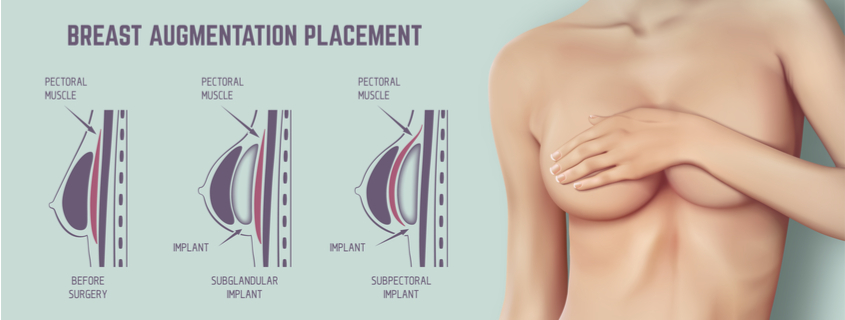
When you make the decision to undergo breast enlargement, there is a chance that your body may form scar tissue around the implant. However, you won’t be able to feel this change and you may not be aware you have it at all.
When the scar tissue starts to tighten too much though, it can harden your implant and change its shape, which can cause a lot of pain and discomfort – this is known as capsular contracture.
Signs You May Have Capsular Contracture
During the early stages of capsular contracture, you won’t experience any symptoms, so you don’t need to seek treatment. It’s only necessary to seek treatment during the later stages. When your breasts are assessed for capsular contracture, they will be graded as follows:
- Grade 1: The breasts are still soft and look regular
- Grade 2: The breasts are slightly hard to the touch but still look regular
- Grade 3: The breasts feel hard to the touch and the appearance begins to distort
- Grade 4: The breasts are very hard and painful to the touch and they are distorted
Unfortunately, there is no real way to determine whether you will develop capsular contracture after your breast augmentation procedure.
Treating Capsular Contracture
A top breast surgeon such as breast augmentation specialist in Sydney will be able to help you determine whether you have capsular contracture. If you do, there are two treatment options for you to choose form.
- Breast Capsulectomy: The breast implants are removed
- Breast Capsulotomy: The breast implants are released internally
The only way that you can reduce your chances of developing capsular contracture is to opt for polyurethane-coated breast implants as they carry the lowest risk.
What to Expect During & After Capsular Contracture Surgery
Capsular contracture surgery is a day procedure that requires a general anaesthetic. The average procedure lasts two to three hours and your original breast surgery scar will be used to access the implant. The breast implant/s will either be released or replaced with a new set.
There will be some bruising, swelling and discomfort after your surgery but this can be managed with pain medication. The day after your surgery, you should be able to walk around and engage in light activities. Strenuous activity is only permitted four to five weeks after your procedure. Because your surgeon used your original incision site, you won’t be left with any additional scarring.
Before undergoing this procedure, it’s important to realise that there is a chance that capsular contracture could occur again. In fact, if it happened once, you do have a higher risk of developing the same problem again. To lower your risk you can either remove your implants completely or choose an implant that is coated in polyurethane.
Your surgeon will take you through your options and guide you through your surgery during your consultation. Capsular contracture is obviously not an ideal situation but there are options available that include being able to enjoy perkier, fuller breasts.
Image credit: shutterstock.com
Further Reading about Breast Implant in Australia and New Zealand
- Queensland and NSW – Breast Lift with Implants Surgery
- SYDNEY / MELBOURNE – Breast Lift with Implants by Dr Ziggy Moradi Specialist Plastic Surgeon
- NEW ZEALAND – Breast Lift with Implants Surgery by Dr Mark Gittos Surgeon Plastic Surgeon
- SYDNEY – Breast Lift with Implants Surgery by Dr Michael Kernohan Specialist Plastic Surgeon
- BREAST IMPLANTS Gallery by Dr Guy Watts
- Breast Implant Removal Sydney – Soliman Plastic Surgery
- Breast Implant Removal FAQs – Carmen Munteanu’s Best Answers
- Breast Implant Options – Dr Jake Lim – Plastic Surgeon
